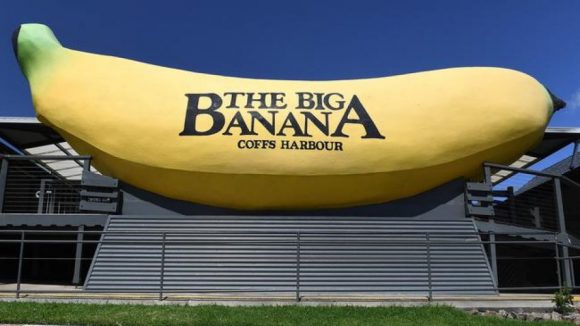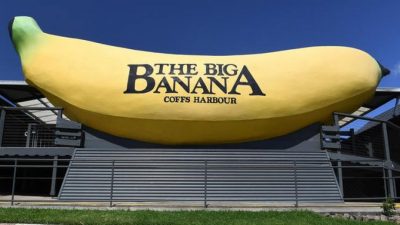School holiday family road trips can be hard enough.
The chorus of ‘are we there yet’, coupled with the logistics of traveling on what is arguably the busiest and most dangerous times of the year, can lead to some “intense family moments,” to put it lightly.
This year, we decided to throw in an extra variable ‘for fun’…….range anxiety.
Last year, my wife’s business purchased a Model 3 EV to replace our 10-year-old diesel SUV. Although skeptical at first, EV love quickly ensued.
We were both smitten; the instant power, the tech, and no emissions. It all massively outweighed the slight inconvenience of throwing it on charge.
The limited radius of our city commute, school, and sports drop, and commute to the office meant that the overnight charge once or twice a week just became another part of our daily process.
So much so that fighting over who got to take it became problematic. The family workhorse (our Kia carnival, because our life is a circus with three boys under 10) was quickly shunned.
After a couple of weeks with the EV, the petrol Carnival honestly felt like getting into a horse and cart (ok, that might be extreme). But the fact we had finally escaped the baby capsule years meant that a trade-in was on the cards.
After a long negotiation process (with my wife, not the car dealer), permission was given. We traded our old car in for a Long-range Model Y.
Disclosure: It is my favorite car I have ever driven and probably my favorite piece of tech.
Having worked for many years in transport before making the jump to software and spent a good chunk of my life driving, and happily so. It is pure joy to drive. An adolescence spent flicking through Wheels Magazine and car review websites, driving it finally felt like driving the future.
The ultimate test for this newfound love is the family road trip.
Sydney – Port Macquire for one night, then onto Coffs Harbour for five nights, before heading home…..just over 1000km.
How did it go? Pretty smooth, to be honest, with only one minor near disaster, which was mostly due to #usererror.
Smooth journey with the Tesla EV
The journey to Port Macquarie was trouble-free. The audiobook entertained the boys for the majority, and an unexpected and welcome surprise. The hotel chargers were already taken when we arrived. Although both vehicles sat parked there overnight and were not moved- annoyed. The local supercharger had no wait.
The next morning and the next leg to Coffs was more smooth sailing. There were plenty of charging options including the very picturesque Big Banana Fun Park Charging point.

Big Banana supercharger with spectacular views over the coast
The horror stories of hour-long queues at charging stations did not materialize from our experience. Despite traveling on peak driving days. The longest wait was 15 minutes at Casselgrain Wineries near Port Macquarie on the journey home. Not a bad place to wait. Although the restaurant on site looked great for a planned visit. We didn’t want to experience it with the kids.
Drive of shame, with kids in the Tesla EV
I have always met the “but what happens if you run out of charge” question from EV skeptics with the classic, well, “what happens if you run out of fuel” comeback.
The reality of EV ownership, is that larger distances and road trips require some planning. It also requires knowledge of the supercharger network.
EV infrastructure is simply not as abundant as petrol stations regionally. The tech (the car) does a fantastic job of alerting you and steering towards appropriate charging intervals.
Having worked in software for 10 years and facing this daily battle. What happens when the user doesn’t pay attention to what the platform is telling them?
A last-minute offer from friends staying in Hawks Nest on the way home to Sydney turned into an additional overnight stay. Despite advice from friends that a charger was indeed in Hawks Nest (we didn’t have the cord on board to make this charger compatible.)
I also made the mistake of doing a quick glance at other destination chargers in the vicinity. I thought we were safe, without thinking they were on the other side of a very large bay (Nelson Bay) that would be over 80 kilometers away. A back-of-the-envelope calculation of this extra leg when charging in Port Macquarie cut it to fine. What ensued was “the drive of shame.”
User abuse
Dropping the family off and heading to the closest supercharger with a previous message flagging “you are too far from the closest known charging stations” followed by “please do not exceed 90km per hour to reach your destination”. Fantastic when you are on the Princes Highway with a limit of 110km.
Limping into the Heatherbrae supercharger with 9km left was not a pleasant feeling. It was not my proudest moment for someone with 20 years of logistics experience.

Still this close call will not deter me. Thoughts turn to what the future holds for EV infrastructure in Australia. Especially as light commercial EVs and EV trucks come onto the market.
Granted, hauling three kids to Coffs Harbour in a family EV is not the same as hauling a 12-pallet Pantech with eight tons of chilled perishables to make a delivery slot. But it all comes down to infrastructure and data, the vehicle’s range, how quickly it can recharge, etc.
The next 10 years in transport tech, both hardware and software, will be fascinating to work in. Hopefully, Australia’s uptake of EVs in heavy vehicle capacity will be significant. Yes, there will be challenges. Australia is a massive continent with enormous supply chain corridors, but this is just another problem to solve.
Charging infrastructure has increased in Australia significantly over the last few years. It continues to do so and will need to if it intends to keep pace with demand.
EVs are leading the future
Australia is blessed with an abundance of renewable energy, especially from solar. Despite the directionless energy policy over the last 15 years (don’t get me started), Australians’ uptake of home solar, batteries, and EVs is to be commended.
According to the Clean Energy Council, renewable energy accounted for 36% of Australia’s total electricity generation in 2022, up from 33% in 2021.
No amount of diesel generators next to an EV charger memes and ‘what happens when the sun doesn’t shine rhetoric’ can convince me that this is anything but a fantastic trend, and hopefully on the increase year after year.

“Drive of shame” captured via battery-powered Loocate2u tracker
About the author

Mark Power
M&A for Locate2u (ASX:Z2U) and GM Talcasoft. With over 20 years in transport and logistics, Mark has shaped the industry by spearheading innovative ideas and facilitating strategic mergers. He's successfully grown and sold two businesses.










